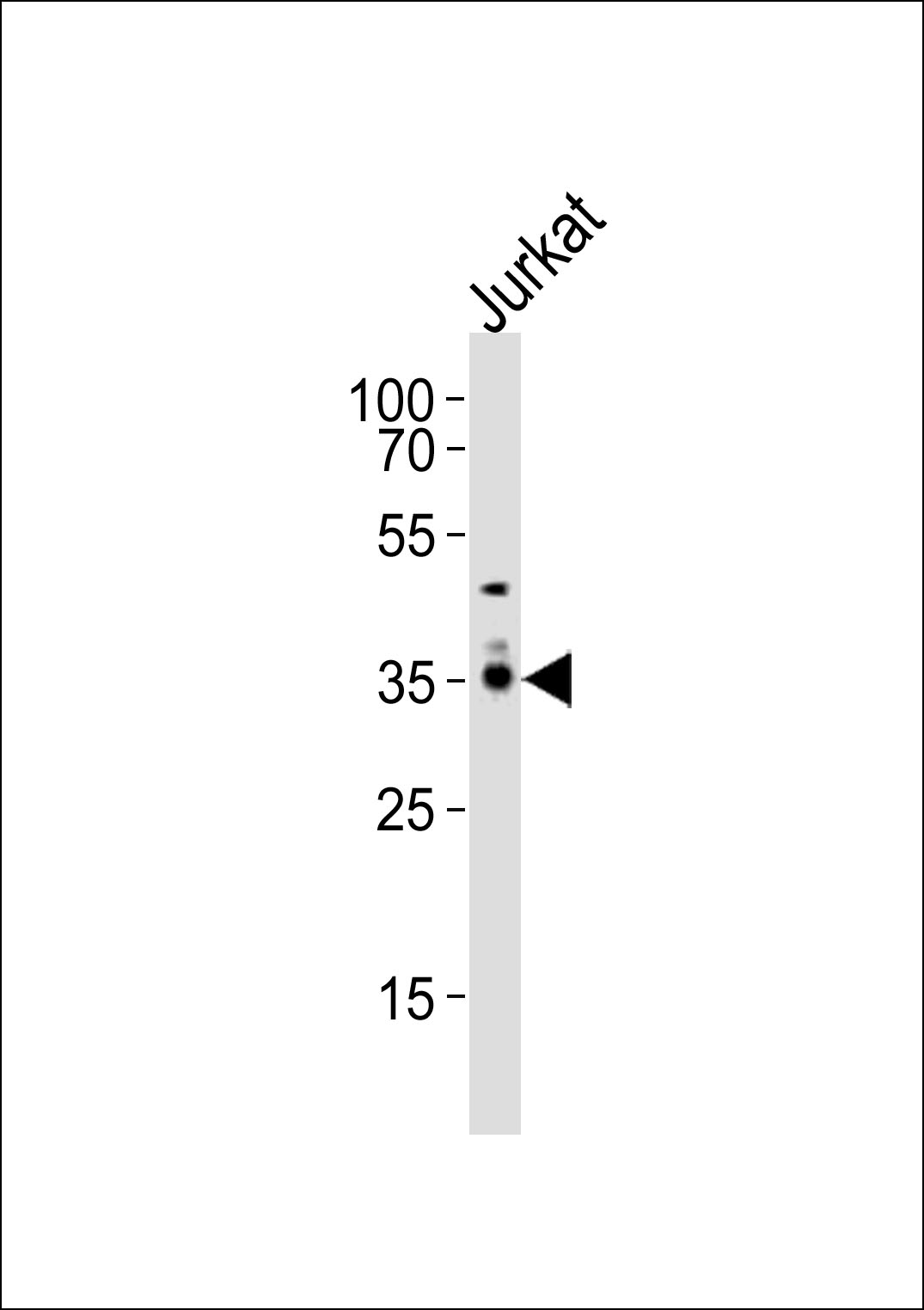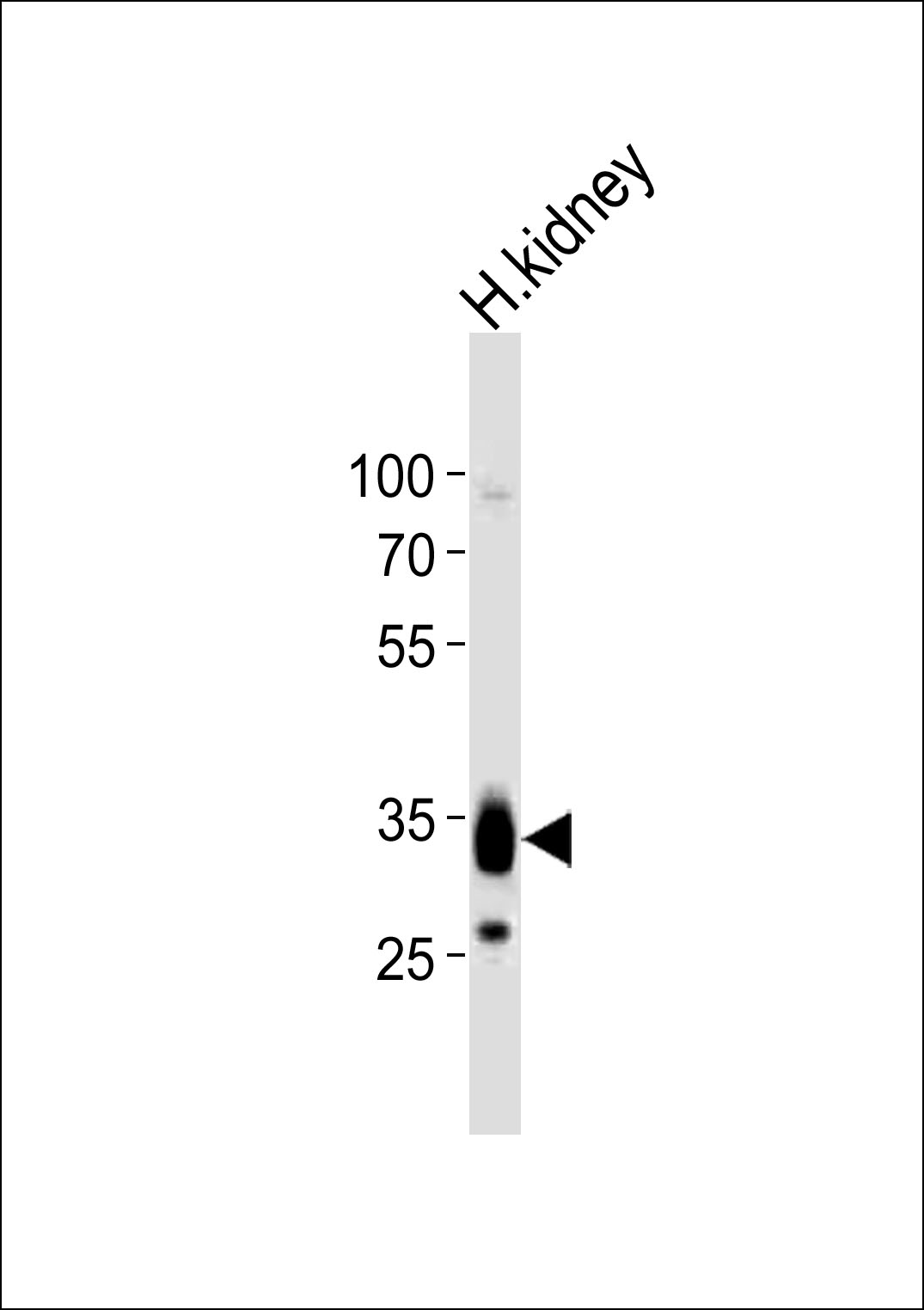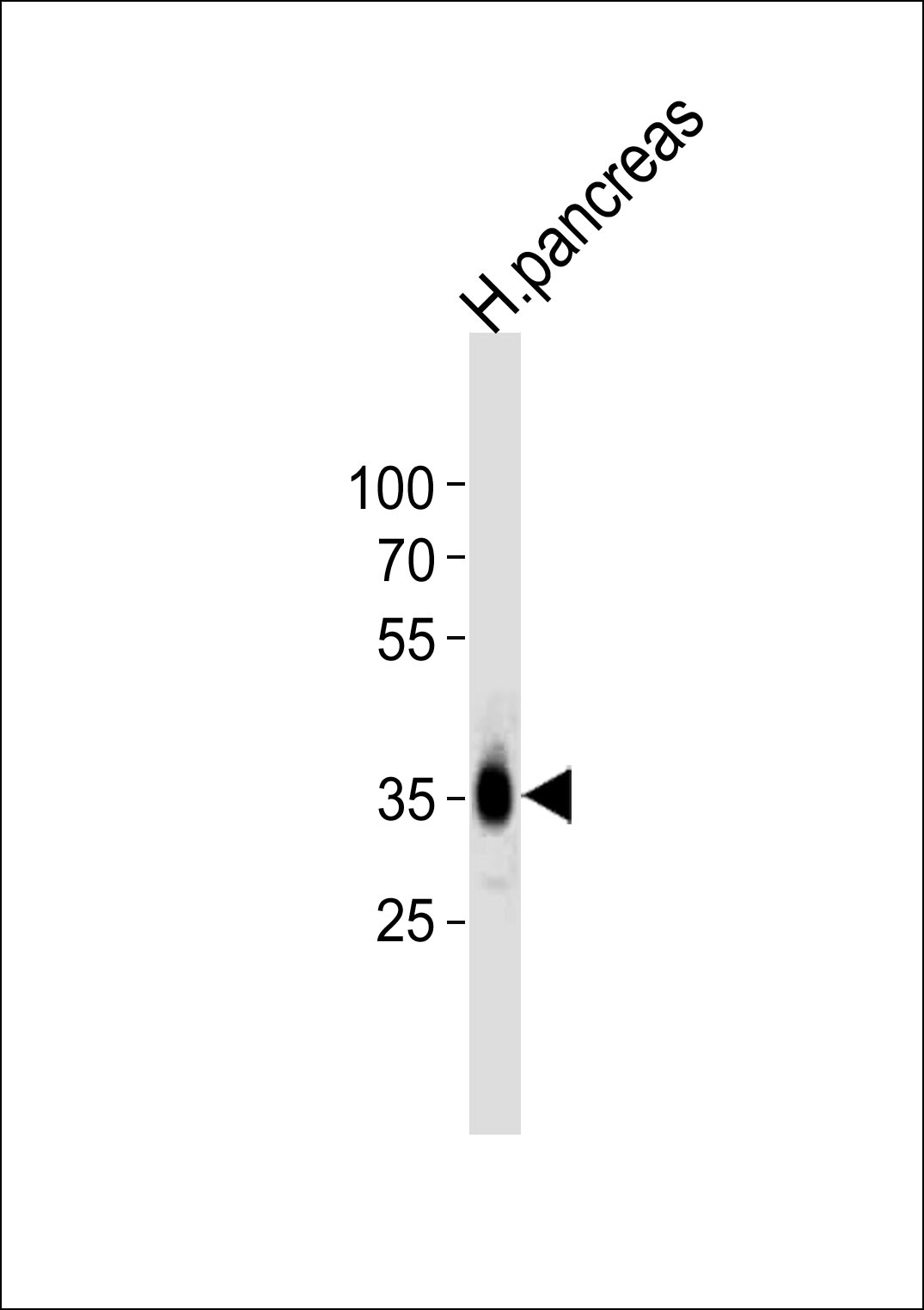PPAP2A Antibody (C-term)
Purified Rabbit Polyclonal Antibody (Pab)
- 产品详情
- 实验流程
- 背景知识
Application
| WB, E |
|---|---|
| Primary Accession | O14494 |
| Reactivity | Human |
| Host | Rabbit |
| Clonality | Polyclonal |
| Isotype | Rabbit IgG |
| Calculated MW | 32156 Da |
| Gene ID | 8611 |
|---|---|
| Other Names | Lipid phosphate phosphohydrolase 1, PAP2-alpha, Phosphatidate phosphohydrolase type 2a, Phosphatidic acid phosphatase 2a, PAP-2a, PAP2a, PPAP2A, LPP1 |
| Target/Specificity | This PPAP2A antibody is generated from a rabbit immunized with a KLH conjugated synthetic peptide between 270-304 amino acids from the C-terminal region of human PPAP2A. |
| Dilution | WB~~1:1000 E~~Use at an assay dependent concentration. |
| Format | Purified polyclonal antibody supplied in PBS with 0.09% (W/V) sodium azide. This antibody is purified through a protein A column, followed by peptide affinity purification. |
| Storage | Maintain refrigerated at 2-8°C for up to 2 weeks. For long term storage store at -20°C in small aliquots to prevent freeze-thaw cycles. |
| Precautions | PPAP2A Antibody (C-term) is for research use only and not for use in diagnostic or therapeutic procedures. |
| Name | PLPP1 (HGNC:9228) |
|---|---|
| Synonyms | LPP1, PPAP2A |
| Function | Magnesium-independent phospholipid phosphatase of the plasma membrane that catalyzes the dephosphorylation of a variety of glycerolipid and sphingolipid phosphate esters including phosphatidate/PA, lysophosphatidate/LPA, diacylglycerol pyrophosphate/DGPP, sphingosine 1-phosphate/S1P and ceramide 1- phosphate/C1P (PubMed:10962286, PubMed:17379599, PubMed:9305923, PubMed:9607309, PubMed:9705349). Also acts on N-oleoyl ethanolamine phosphate/N-(9Z-octadecenoyl)-ethanolamine phosphate, a potential physiological compound (PubMed:9607309). Through its extracellular phosphatase activity allows both the hydrolysis and the cellular uptake of these bioactive lipid mediators from the milieu, regulating signal transduction in different cellular processes (PubMed:10962286, PubMed:12909631, PubMed:15461590, PubMed:17379599). It is for instance essential for the extracellular hydrolysis of S1P and subsequent conversion into intracellular S1P (PubMed:17379599). Involved in the regulation of inflammation, platelets activation, cell proliferation and migration among other processes (PubMed:12909631, PubMed:15461590). May also have an intracellular activity to regulate phospholipid- mediated signaling pathways (By similarity). |
| Cellular Location | Cell membrane; Multi-pass membrane protein Apical cell membrane; Multi-pass membrane protein. Membrane raft; Multi-pass membrane protein. Membrane, caveola {ECO:0000250|UniProtKB:Q61469}; Multi-pass membrane protein |
| Tissue Location | Widely expressed with highest expression found in prostate (PubMed:9305923). Found to be down-regulated in colon adenocarcinomas (PubMed:9570154). [Isoform 2]: Predominant in heart and pancreas. |
For Research Use Only. Not For Use In Diagnostic Procedures.
Provided below are standard protocols that you may find useful for product applications.
BACKGROUND
Broad-specificity phosphohydrolase that dephosphorylates exogenous bioactive glycerolipids and sphingolipids. Catalyzes the conversion of phosphatidic acid (PA) to diacylglycerol (DG). Pivotal regulator of lysophosphatidic acid (LPA) signaling in the cardiovascular system. Major enzyme responsible of dephosphorylating LPA in platelets, which terminates signaling actions of LPA. May control circulating, and possibly also regulate localized, LPA levels resulting from platelet activation. It has little activity towards ceramide-1-phosphate (C-1-P) and sphingosine-1-phosphate (S-1-P). The relative catalytic efficiency is LPA > PA > S-1-P > C-1-P. It's down-regulation may contribute to the development of colon adenocarcinoma.
REFERENCES
Kai M.,et al.J. Biol. Chem. 272:24572-24578(1997).
Leung D.W.,et al.DNA Cell Biol. 17:377-385(1998).
Ulrix W.E.J.,et al.J. Biol. Chem. 273:4660-4665(1998).
Roberts R.,et al.J. Biol. Chem. 273:22059-22067(1998).
Schmutz J.,et al.Nature 431:268-274(2004).
终于等到您。ABCEPTA(百远生物)抗体产品。
点击下方“我要评价 ”按钮提交您的反馈信息,您的反馈和评价是我们最宝贵的财富之一,
我们将在1-3个工作日内处理您的反馈信息。
如有疑问,联系:0512-88856768 tech-china@abcepta.com.























 癌症的基本特征包括细胞增殖、血管生成、迁移、凋亡逃避机制和细胞永生等。找到癌症发生过程中这些通路的关键标记物和对应的抗体用于检测至关重要。
癌症的基本特征包括细胞增殖、血管生成、迁移、凋亡逃避机制和细胞永生等。找到癌症发生过程中这些通路的关键标记物和对应的抗体用于检测至关重要。 为您推荐一个泛素化位点预测神器——泛素化分析工具,可以为您的蛋白的泛素化位点作出预测和评分。
为您推荐一个泛素化位点预测神器——泛素化分析工具,可以为您的蛋白的泛素化位点作出预测和评分。 细胞自噬受体图形绘图工具为你的蛋白的细胞受体结合位点作出预测和评分,识别结合到自噬通路中的蛋白是非常重要的,便于让我们理解自噬在正常生理、病理过程中的作用,如发育、细胞分化、神经退化性疾病、压力条件下、感染和癌症。
细胞自噬受体图形绘图工具为你的蛋白的细胞受体结合位点作出预测和评分,识别结合到自噬通路中的蛋白是非常重要的,便于让我们理解自噬在正常生理、病理过程中的作用,如发育、细胞分化、神经退化性疾病、压力条件下、感染和癌症。








